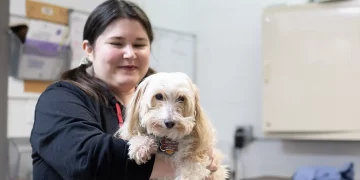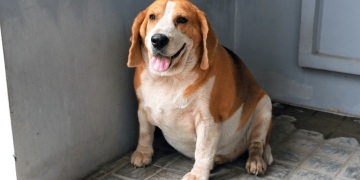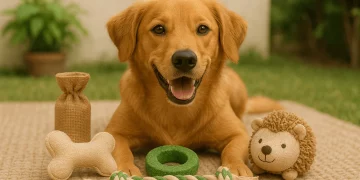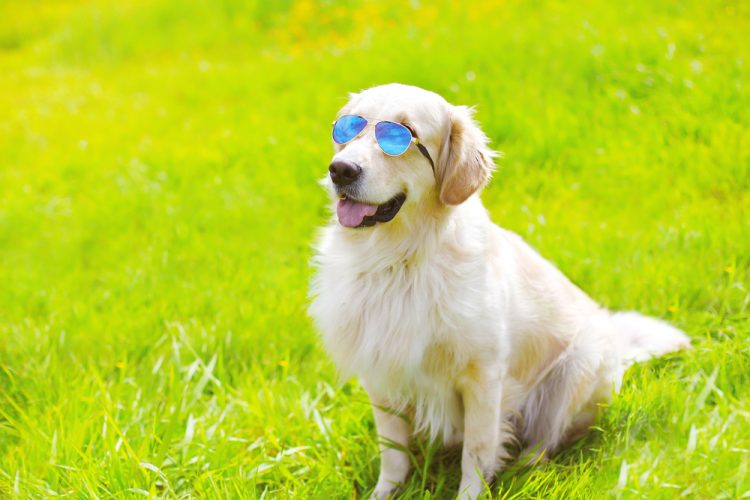Maintaining a healthy weight is just as important for pets as it is for humans. Obesity in pets is a growing concern that can lead to a range of health issues, including diabetes, heart disease, joint problems, and reduced lifespan. As pet owners, it’s our responsibility to ensure that our pets maintain a healthy weight throughout their lives. Managing your pet’s weight involves a combination of proper diet, regular exercise, and consistent monitoring. This article will discuss strategies for controlling your pet’s weight, including diet management, exercise routines, and general care tips that promote long-term health and well-being.
Understanding the Importance of Weight Management in Pets
Before delving into the specifics of weight management, it’s important to understand why controlling your pet’s weight is crucial. Obesity is not just a cosmetic issue; it significantly affects your pet’s health and quality of life.
1. Health Risks Associated with Obesity in Pets
Obesity in pets can lead to a wide range of health problems. These include:
- Diabetes: Excessive weight increases the risk of insulin resistance, leading to diabetes, a chronic condition that requires lifelong management.
- Heart Disease: Overweight pets are more likely to develop heart conditions due to the added strain on their cardiovascular system.
- Joint Problems: Extra weight puts pressure on joints, leading to conditions like arthritis and hip dysplasia, which can affect mobility and cause pain.
- Reduced Lifespan: Studies have shown that overweight pets often have a shorter life expectancy due to the strain on their bodies from excess weight.
- Respiratory Issues: Obese pets may have difficulty breathing, especially in hot weather or when exerting themselves.
2. How to Determine if Your Pet Is Overweight
The first step in managing your pet’s weight is to determine if they are overweight. While different pets have different body types, the general guidelines for evaluating your pet’s weight include:
- Ribs: You should be able to feel your pet’s ribs easily but not see them. If the ribs are difficult to feel or are covered with a thick layer of fat, your pet may be overweight.
- Waist: When looking at your pet from above, there should be a noticeable waistline behind the ribs. If your pet’s body is round or the waist is hard to distinguish, this may indicate excess weight.
- Body Condition Score (BCS): Vets often use a scale of 1 to 9 to assess a pet’s body condition, with 1 being severely underweight and 9 being extremely overweight. A score of 5 is ideal, indicating a healthy, balanced weight.
Strategies for Weight Control in Pets
Managing your pet’s weight requires a holistic approach, combining proper diet, exercise, and monitoring. Below are several effective strategies for controlling your pet’s weight.
1. Diet Management for Weight Control
One of the most effective ways to control your pet’s weight is through proper diet management. This includes choosing the right food, controlling portion sizes, and ensuring that your pet gets the necessary nutrients for their health.
- Choose High-Quality Pet Food: Select a high-quality, well-balanced pet food that is appropriate for your pet’s age, breed, and activity level. Look for foods that contain lean protein, healthy fats, and fiber. Avoid foods with excessive fillers such as corn or soy, which provide little nutritional value.
- Control Portion Sizes: Overfeeding is one of the most common causes of obesity in pets. Follow the portion guidelines provided by your pet’s food manufacturer or your vet. It’s important to measure your pet’s food to avoid guesswork. Many pet owners unintentionally overfeed their pets because they rely on visual cues rather than measuring out meals.
- Limit Treats and Snacks: Treats should make up no more than 10% of your pet’s daily caloric intake. Choose low-calorie, healthy treats, and avoid giving your pet human food, which can be high in fat and sugar. Consider using treats as part of training or behavior reinforcement rather than just for snacking.
- Feed Smaller, More Frequent Meals: Instead of giving your pet one or two large meals a day, consider dividing their daily portion into three or four smaller meals. This can help regulate their metabolism and prevent overeating.
- Consider Weight Management Food: If your pet is overweight, consider switching to a weight management formula that is lower in calories but still provides all the necessary nutrients. These diets often have higher fiber content, helping your pet feel full while consuming fewer calories.
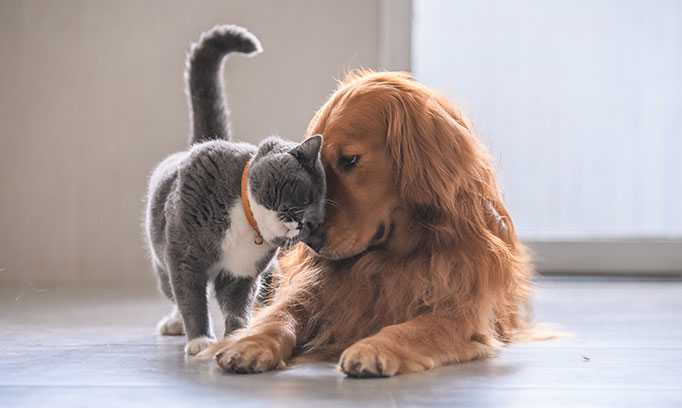
2. Exercise for Weight Control
Exercise is crucial for burning calories and maintaining a healthy weight. Regular physical activity not only helps with weight control but also improves cardiovascular health, muscle tone, and overall energy levels.
- Walks and Outdoor Activities: Dogs, especially, benefit from daily walks. The amount of exercise required depends on your dog’s breed, age, and health status. A brisk 30-minute walk twice a day can make a significant difference in weight management. For cats, encourage playtime with interactive toys, such as laser pointers or feather wands, to promote activity and burn calories.
- Incorporate Play into Your Pet’s Routine: Playtime is an excellent way to combine fun and exercise. Dogs can enjoy fetch, tug-of-war, and running in a safe, enclosed yard. Cats can benefit from chasing toys or climbing cat trees. Interactive play is a great way to keep pets engaged while helping them stay active.
- Increase Activity Gradually: If your pet has been sedentary, it’s important to gradually increase their exercise level. Start with short sessions of play or walking and build up as your pet becomes fitter. Overexertion can lead to injuries, especially in older or obese pets.
- Monitor Weight and Adjust Exercise: Keep track of your pet’s weight and adjust their exercise routine as needed. If your pet is losing weight too quickly or not losing weight at all, consider modifying the intensity or duration of their exercise.
3. Monitor and Adjust Regularly
Consistent monitoring is key to successful weight management. You should regularly weigh your pet and assess their body condition score to track progress. Adjust their diet and exercise routine based on these assessments.
- Weight Checks: Weigh your pet at least once a month to ensure they are maintaining a healthy weight. If your pet is losing weight too quickly or not at all, consult your vet to adjust their plan.
- Body Condition Score: As mentioned earlier, use the body condition score (BCS) to assess whether your pet is at an ideal weight. If their score is higher than 5, make adjustments to their diet and exercise regime.
- Avoid Crash Diets: Never put your pet on a crash diet or drastically reduce their food intake without consulting your vet. Rapid weight loss can be harmful to pets, especially for those with underlying health conditions. A gradual approach is safest for long-term health.
4. Veterinary Guidance and Support
If your pet is significantly overweight, it’s important to work closely with a veterinarian. A vet can provide tailored advice based on your pet’s specific needs, taking into account their breed, age, and medical history.
- Develop a Weight Loss Plan: Your vet can help create a weight loss plan that includes appropriate dietary recommendations, exercise routines, and a safe target weight.
- Address Underlying Health Issues: Obesity can sometimes be caused by underlying health conditions, such as hypothyroidism or metabolic disorders. A vet can perform tests to rule out any medical issues that may be hindering weight loss.
- Regular Check-Ups: Ensure that your pet has regular vet check-ups to monitor their health and progress. These visits are important for early detection of any weight-related health problems.
5. Environmental Factors and Lifestyle Changes
Your pet’s environment and lifestyle also play an important role in weight management. Ensuring that your pet’s surroundings are conducive to healthy living can promote better weight control.
- Encourage Active Play: Make sure that your home environment encourages movement. Consider setting up an interactive play area for your pet with toys, climbing structures, and space to run or jump.
- Create a Routine: Pets, like humans, benefit from routine. Set a consistent schedule for meals, exercise, and playtime. Consistency helps regulate your pet’s metabolism and keeps their body in a balanced state.
- Limit Access to Food: Avoid leaving food out all day. Free-feeding can lead to overeating and obesity. Instead, schedule meals and remove any leftover food after a set period. This helps your pet develop better eating habits.
Conclusion
Managing your pet’s weight is a critical component of their overall health and well-being. By combining a balanced diet, regular exercise, and consistent monitoring, you can help your pet maintain a healthy weight for a long and active life. Remember that weight management is not a quick fix—it requires dedication, consistency, and patience. Working closely with your veterinarian ensures that you are providing the best possible care for your pet and making informed decisions about their diet and exercise needs. By making weight management a priority, you can significantly improve your pet’s health, quality of life, and lifespan.













